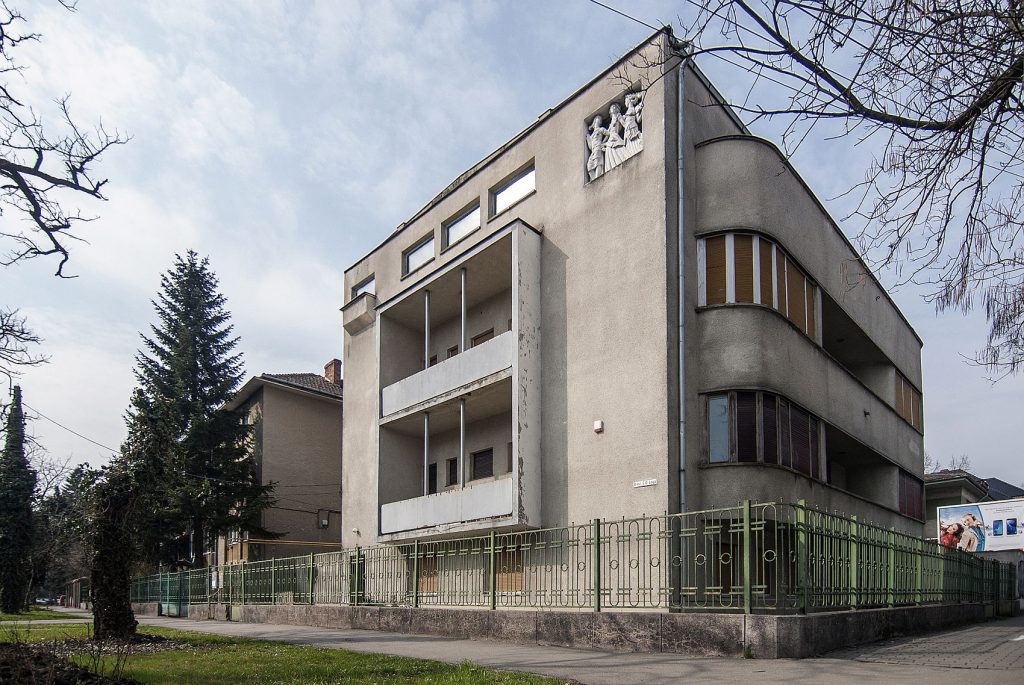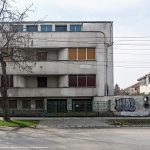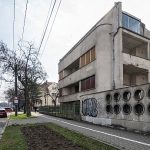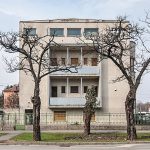Text: Ştefan Ghenciulescu
Photo: Dan Purice
What caught my eye from a distance was a small modernist building in Timişoara – simple, elegant, dainty and thus highly representative of our nice and moderate interbel¬lum. It was only when I came within a few feet of the building that I was able to notice the Art Deco monogram indicating the construction date—a typical feature of those times. That’s when I froze—the year did not belong to the 1930s, as I had expected. It was 1947. The inter-war building had not in fact been built during the inter-war period. Its owners finalized its construction and flaunted it in front of the whole world the very same year their own universe fell apart.
I really had to find out more about this overlap between a happy personal event and the full instauration of a Soviet-type totalitarian regime in Romania, which, among other things, made the confiscation of precisely this type of houses one of its main priorities. The identical ground and first floors allowed me to speculate that I was not in fact dealing with a villa, but with two apartments belonging to an extended family – another very com¬mon practice of the time.
And that’s exactly what they were. With the help of Oana Simionescu, an architect based in Timişoara, I managed to get in touch with another architect, Ana Raut, who had lived there for twenty years. She was the one who told me that the land had been bought in 1946 by one Mr. Kaufmann who erected the small building for his two married daughters, Angela Schön and Elena Werner. Hence the letters W and S which emblazon, among other things, the stained-glass doors. In 1950, the building was nationalized and the families emigrated. Throughout the years, various tenants came and left, a small extension was built (the attic above the first floor) and the building was finally sold to its last tenants in 1997, under the famous Law no. 122.
But, if we are to deliver a fully-rounded and perfectly symmetrical story, we should mention the fact that the Kauf¬manns were also part of the Jewish community. Imagine that: they must have faced unimaginable dangers and terrors during the war, given a sigh of relief in 1944 and invested in a new future with optimism, only to see it collapse the very next day.
Naturally, it’s just the kind of story that will make you look at old houses with different eyes and ponder about the fact that all of them, almost without exception, must have had their share of drama – one that is not necessarily architectural in nature. Beyond that, however, the Kaufmann–Werner–Schön estate seems even more impressive if we think about the current historical context. An unpleasant symmetry seems to link the old and present historical roller-coasters. After the liberation of 1990 and a slow but steady progress towards freedom, peace and Europe (not that I want to idealize both progress and Europe), a dreadful wind is blowing once again, carrying both hatred and violence with it – either next to us, towards us or in countries we were accustomed to think of as indestructible pillars supporting our progress towards a better future. The world goes crazy and it seems we’re helpless about it.
Nevertheless, I, for one, refuse to allow this to dampen my spirits and would rather interpret things in (yet) another way. I bow before the Kaufmanns and their incredible strength to resist and start a new life. They may have lost their house, but their lives went on. The house is still there, a little bit worn and torn, yet dignified. The city is still there too, a little bit shaken as well, facing several serious issues. But, what we are also able to notice here is a lingering spirit of freedom and tolerance which once helped build a tolerant community, and much later, made the December 1989 Revolution possible (also a moment so few of us expected). I guess the Kaufmanns would agree that we really should not let ourselves become overwhelmed with despair.






